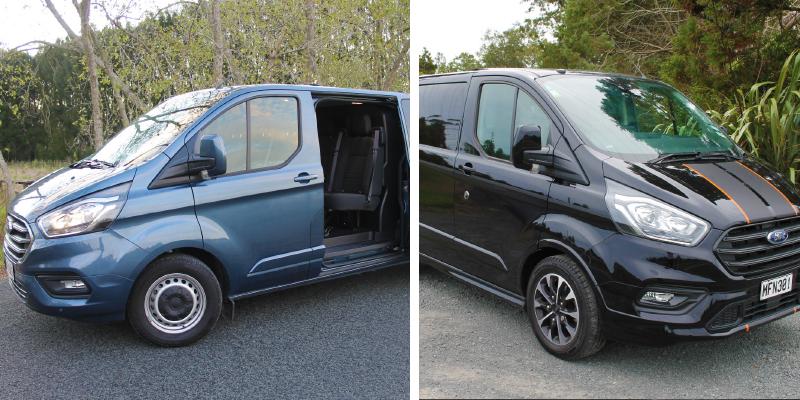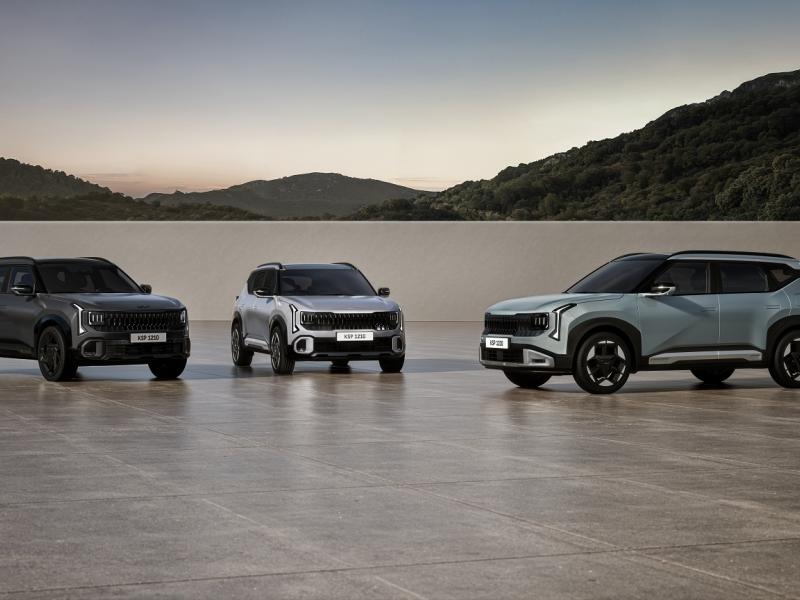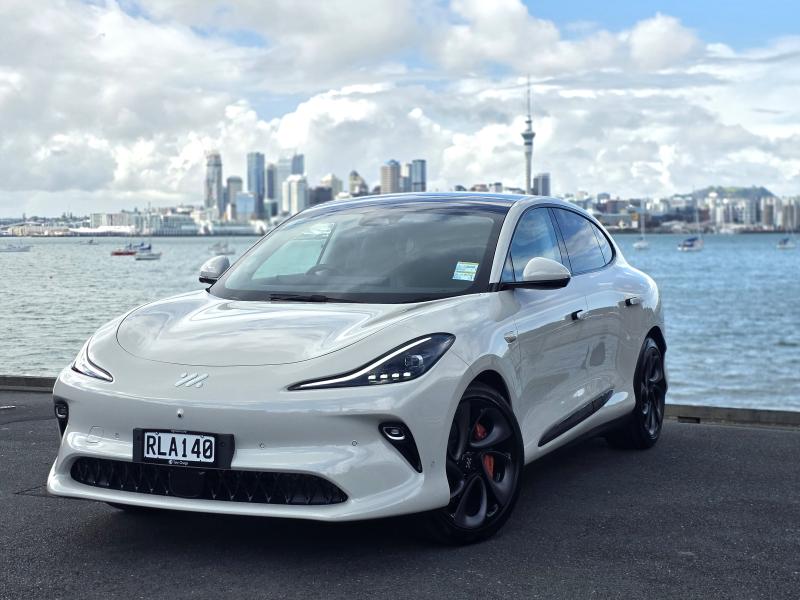If you were a little confused about the Ford Transit Custom line-up, don’t feel bad about it.
Indeed, those of us who are well informed in the commercial vehicle sector are struggling with exactly what the baby Ford range is shaping up to look like.
From what we have seen so far, the Transit Custom and the Tourneo Custom (the one with the seats) are to be joined by the two vans you see here, the Transit Custom DCiV (Double Cab In Van) and the Transit Custom Sport, which brings the Transit Custom line-up to six.
The DCiV and Custom Sport are not on sale yet, but they were introduced at last year’s Fieldays and Ford wants everyone to know a little more about them, so here is what we have discovered.
The Custom Sport first: This looks like the van BA Baracus might have driven Hannibal, Faceman and Murdock around in, for those who can remember the (original) A-Team. And we couldn’t have asked for a better colour than basic black to accommodate the orange stripe, though the stripe colour does change with the van’s basic body colour.
Of course, there is more to the Custom Sport than a cosmetic paint job. It sits slightly taller than the conventional version on 17-inch alloys over the usual 16s. The Sports body kit gives a slight lift at the back and a little breathing on the engine demonstrates that this is no Clayton’s cargo hauler.
The two-litre turbo diesel kicks out a few more kilowatts (136) and a few more newton metres of torque (415) in the Custom Sport and this does affect the CO2 output as well as fuel economy, though it’s only a small increase.
Other changes include daytime running lights, cornering bi-xenon high intensity discharge headlights, the inclusion of a 230-volt power inverter in the cabin, 10-way, power adjusted – leather – seating for the driver, along with LED lighting for the rear cabin.
Payload has increased from the regular model’s 808kg to 1046kg in the Sport Custom and towing has increased from 1700kg braked to 1800kg braked.
There would be some for whom the Custom Sport model would appeal – its still a useful and capable van with a 5.95 cubic metre load space and that is the primary difference between the regular model, the Sport model and the Custom DCiV.
This last is a van with an identity crisis – it thinks it’s a Ford Ranger ute. Mind you, this double cab in a van body is something of a genius stroke on Ford’s part as it really does maximise the versatility of the vehicle.
The DCiV still gives you a serviceable cargo area – 4.3 cubic metres – neatly isolated from the six-seater cabin, but we’d suggest five is more realistic. The DCiV also has the power inverter of the Sport model.
Ford’s two-litre turbo diesel – common across the range – shows a third variation with the DCiV model: same 125kW as the original Transit Custom but the torque is significantly down to 390Nm.
Most would think this is a bad thing, but in fact, the Ford Custom DViC is designed for passenger comfort and the engine’s smoother performance plays a significant role in that.
There is more to tell of the tale of two Transits, but for the moment, we can give you the pricing ladder (above) with more info to come.
Ford Transit Custom SWB $54,990 + ORC
Ford Transit Custom
Sport SWB $59,990 + ORC
Ford Transit Custom LWB $61,490 + ORC
Ford Transit Custom
LWB High roof $61,990 + ORC
Ford Tourneo Bus
LWB Trend $61,990 + ORC
Ford Transit Custom
CiV LWB Low roof $64,990 + ORC






